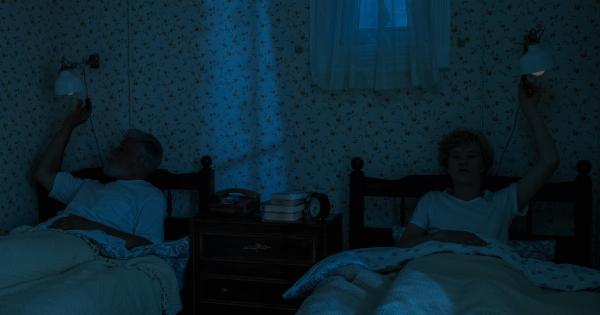Microwaves have been a popular kitchen appliance for several decades now and many people rely on them for daily use. With their efficiency and convenience, microwaves make our lives easier.
However, there is always the concern of radiation leakage from microwaves.
Radiation leakage can happen due to various reasons – a damaged or dirty seal on the door, a faulty door latch, corrosion, or mechanical issues. Radiation can be dangerous, leading to health hazards like dizziness, headaches, fatigue, and nausea.
It’s essential for every household to test for radiation leakage in their microwave to avoid any potential hazards. Here are a few ways to test if your microwave is leaking radiation:.
1. Use a Microwave Leakage Detector
A microwave leakage detector is a device that detects any levels of radiation emitted from the microwave. It’s a simple and effective way to test for any leaks. The device has to be placed in the microwave, and the microwave has to be turned on.
The microwave leakage detector will then beep or flash if it detects any radiation leakage.
Microwave leakage detectors are available both online and in stores. The price of the device ranges from $5 to $40, depending on the brand and the features. It’s a small investment to ensure the safety of you and your family.
2. Monitor Your Body for Symptoms
One way to detect radiation leakage is by observing any symptoms of radiation exposure. If you experience symptoms like headaches, fatigue, nausea, or dizziness after using the microwave, it could be a sign of radiation leakage.
While these symptoms could be due to other reasons, they are worth monitoring.
It is crucial to note that symptoms may appear after prolonged use of a leaking microwave, and it may not be evident initially. It is best to check periodically for radiation leakage if you use the microwave frequently.
3. Check the Door Seal
The door seal in a microwave can also contribute to radiation leakage. Over time, the seal can wear out, causing radiation to leak through the gaps.
Checking the door seal regularly ensures that any wear or tear is identified early on, and the seal is replaced.
To check if the door seal is faulty, place a piece of paper between the door and the microwave. If the paper slides out easily, it’s a sign that the seal is not tight and needs to be fixed.
4. Conduct a Water Test
A water test is another effective way to test for microwave radiation leakage. Fill a microwave-safe glass with water. Place the glass in the microwave and turn it on for one minute. After one minute, check the water.
If the water is warm, but the glass is still cold, it’s an indication that radiation is leaking out of the microwave.
It’s essential to note that the water test is not as reliable as a microwave leakage detector as it can’t measure the exact levels of radiation. However, it can help identify if there is a significant leak.
5. Inspect the Microwave
Inspecting the microwave visually can also identify leaks. Check for any visible cracks, dents, or corrosion in the microwave. These could be signs of radiation leakage.
It’s also essential to check the mechanical parts and see if they are working correctly.
It’s best to consult a professional technician for any repairs or part replacements.
6. Use a Radiological Dosimeter
A radiological dosimeter is a device used to measure radiation levels. It can detect radiation in the surrounding area, and it’s a valid method to check for microwave radiation leakage.
However, radiological dosimeters are expensive and not commonly available.
7. Use a Mobile Phone
The radiation-emitting from microwaves can interfere with mobile phones. Placing a mobile phone in the microwave and then calling it from another phone can test if there is any radiation leakage.
If the mobile phone receives the call, it could mean that radiation is leaking through the microwave.
However, this method is not the most accurate, and it’s not recommended to use a mobile phone in a microwave.
8. Conduct a Microwave Leakage Test
Some microwaves have a built-in microwave leakage test feature. It’s best to refer to the user manual or contact the manufacturer to know how to perform a test for your microwave model.
It’s essential to follow the instructions carefully and not use the microwave during testing. The test can determine if there is any significant radiation leakage and if any repairs are needed.
9. Keep a Safe Distance
The easiest way to ensure safety from radiation leakage from microwaves is by keeping a safe distance from the appliance. When the microwave is turned on, it’s best to stand 2 to 3 feet away from it.
This distance ensures minimal exposure to radiation and reduces the risk of any health hazards.
10. Replace Old Microwaves
Microwaves have a lifespan of around ten years. Older microwaves are more prone to radiation leakage, and it’s best to replace them. A newer microwave has better insulation and fewer chances of radiation leakage.
It’s essential to maintain quality and safety by purchasing microwaves from trusted brands and outlets.
Conclusion
Checking for radiation leakage in a microwave is necessary for the safety of you and your family. Regular testing and maintenance can prevent any potential health hazards.
Radiation leakage can be caused due to various reasons, and different tests can determine if there is a leak. It’s essential to keep a safe distance from a microwave during use.























